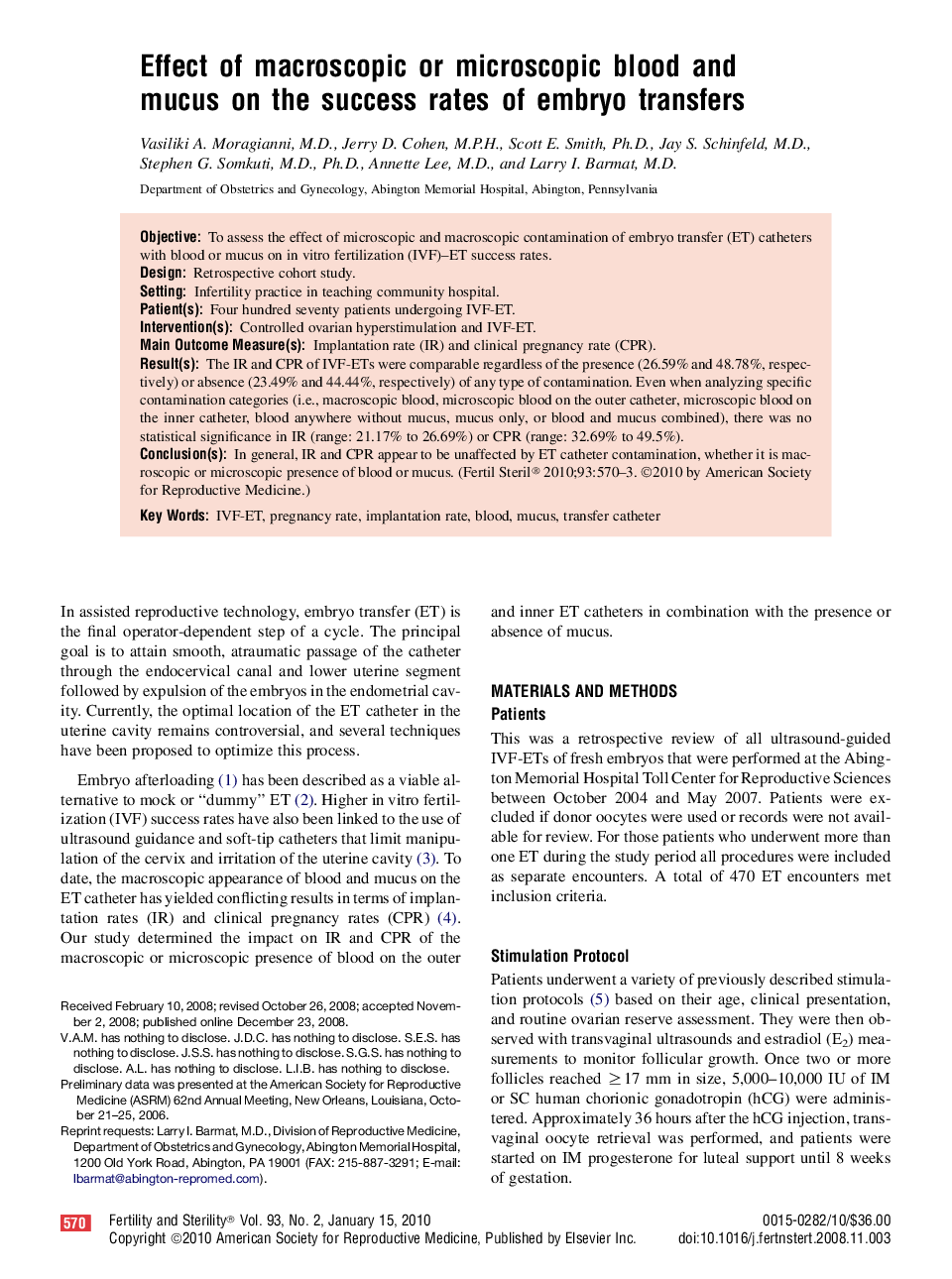| Article ID | Journal | Published Year | Pages | File Type |
|---|---|---|---|---|
| 3933672 | Fertility and Sterility | 2010 | 4 Pages |
ObjectiveTo assess the effect of microscopic and macroscopic contamination of embryo transfer (ET) catheters with blood or mucus on in vitro fertilization (IVF)–ET success rates.DesignRetrospective cohort study.SettingInfertility practice in teaching community hospital.Patient(s)Four hundred seventy patients undergoing IVF-ET.Intervention(s)Controlled ovarian hyperstimulation and IVF-ET.Main Outcome Measure(s)Implantation rate (IR) and clinical pregnancy rate (CPR).Result(s)The IR and CPR of IVF-ETs were comparable regardless of the presence (26.59% and 48.78%, respectively) or absence (23.49% and 44.44%, respectively) of any type of contamination. Even when analyzing specific contamination categories (i.e., macroscopic blood, microscopic blood on the outer catheter, microscopic blood on the inner catheter, blood anywhere without mucus, mucus only, or blood and mucus combined), there was no statistical significance in IR (range: 21.17% to 26.69%) or CPR (range: 32.69% to 49.5%).Conclusion(s)In general, IR and CPR appear to be unaffected by ET catheter contamination, whether it is macroscopic or microscopic presence of blood or mucus.
